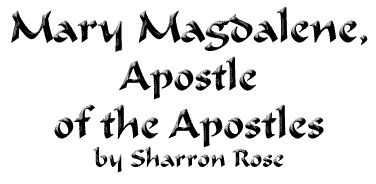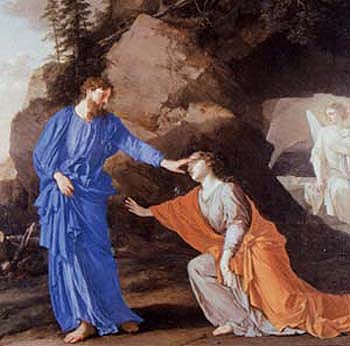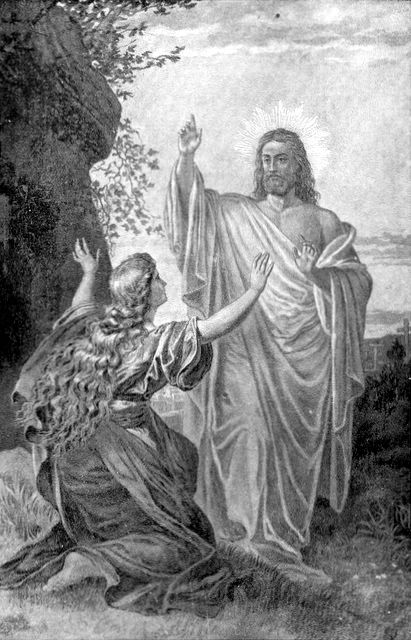 From
From
New Dawn Magazine
Special Issue No.2
"Revelations Beyond the Da Vinci Code" Apostle of the Apostles
 The Pistis Sophia is
a Coptic Gnostic revelatory work composed and /or compiled
in Egypt around the middle of the second century AD. It
claims to disclose the 'secret teachings of the Savior',
reserved for his inner circle of initiates during the
eleven years following his resurrection. Filled
with powerful, poetic imagery, this text reveals the
intimate connections between this emerging form of Christianity,
Paganism and beliefs and rituals founds in the Egyptian
Book of the Dead. (3) It also clearly recognizes and
demonstrates Mary Magdalene's essential role as foremost
disciple, seer and prophetess.
The Pistis Sophia is
a Coptic Gnostic revelatory work composed and /or compiled
in Egypt around the middle of the second century AD. It
claims to disclose the 'secret teachings of the Savior',
reserved for his inner circle of initiates during the
eleven years following his resurrection. Filled
with powerful, poetic imagery, this text reveals the
intimate connections between this emerging form of Christianity,
Paganism and beliefs and rituals founds in the Egyptian
Book of the Dead. (3) It also clearly recognizes and
demonstrates Mary Magdalene's essential role as foremost
disciple, seer and prophetess.
It appears that the teachings found in the Pistis Sophia were created specifically for the apostles who would
go forth and spread his gospel. It
takes the form of a dialogue between Jesus and these
apostles and consists primarily of questions and answers.
It is fascinating to note that in this text, out of the
forty-six questions asked of him, thirty-nine of them
come from Mary Magdalene. Due her sincerity, astute level
of inquiry and ability to comprehend the essence of his
words, time and time again she is praised and recognized
by him for her clarity and insight. For example,
after Jesus presents the first part of these mystical
teachings concerning the aeons, orders and regions of
the “Great Invisible””, he acknowledges
Mary Magdalene's superior capacity for contemplation,
insight and revelation.
 “It came to pass then, when Mary had heard the Savior
say these words, that she gazed fixedly into the air for
the space of an hour. She said: “My Lord, give commandment
to
“It came to pass then, when Mary had heard the Savior
say these words, that she gazed fixedly into the air for
the space of an hour. She said: “My Lord, give commandment
to
me to speak in openness.” And Jesus, the compassionate,
answered and said unto Mary:
“Mary, thou blessed one, whom I will perfect in
all mysteries, of those of the height, discourse in openness,
thou, whose heart is raised to the Kingdom of Heaven more
than all thy brethren.”
Throughout the text, after listening to her interpretation
of his teachings, he acknowledges her perceptive abilities,
“Well, said, Mary, for thou art blessed before all
women on earth, because thou shalt be the fullness of all
fullness and the perfection of all perfections”
This is only the first of a number of texts that speak
of Mary Magdalene's gifts and unique relationship with
Jesus. According to a group of Gnostic Gospels that were
discovered in 1945 in a cave in Upper Egypt near the village
of Nag Hammadi, she was said to be an inspired prophetess
who continuously experienced the living presence of her
Lord within her. In The Gospel of Mary,
from this collection, Mary Magdalene, the visionary, reveals
to the other disciples teachings that were transmitted
to her through visionary experience. In this gospel, she
clearly takes the lead, not only soothing and reassuring
the male apostles who fear capture and death, but relating
to them teachings of the Savior that she alone has been
privileged to receive. As in the Pistis Sophia, the Savior blesses her for her visionary capacity.
When Peter questions her vision, Levi responds with, “ If
the Teacher held her worthy, who are you to reject her?
Surely the Teacher knew her very well, for he loved her
more than us.” (4)
In The Gospel of Phillip,
from the same collection, the disciples appear to be
jealous of the intimate relationship between the Savior
and Mary Magdalene.
“The Companion of the savior is Mary Magdalene.
But Christ loved her more than all the disciples and used
to kiss her often on the mouth. The rest of the disciples
were offended by it and expressed disapproval. They said
to him, “ Why do you love her more than all of us? “ The
Savior answered and said to them, “Why do I not love
you like her? When a blind man and one who sees are both
together in darkness, they are no different from one another.
When the light comes then he who sees will see the light,
and he who is blind will remain in darkness.”
Because I have no reason to doubt Phillips account or
the words found in these early texts, I feel that the Christianity
that was brought to France by Mary Magdalene has a different
feel about it because it was closer to the authentic teachings
of Jesus. If Mary Magdalene truly was the Apostle
of the Apostles, then Jesus transmitted more to her or
perhaps she understood this transmission better than the
rest of the apostles. Through this lens we can begin to
perceive and acknowledge the different understanding and
practice of Christianity that emerged in Southern France,
one that lasted over 1200 years and in a sense pervades
the place to this day.
Previous -|-
Page 1 -|- Page 2 -|-
Page 3 -|- Page 4 -|-Next



